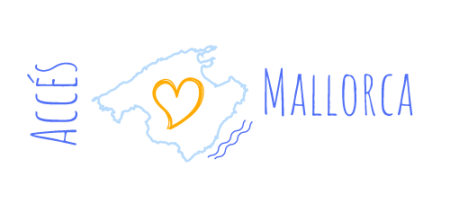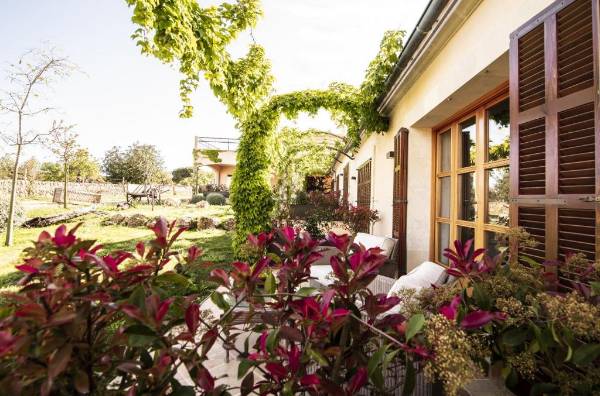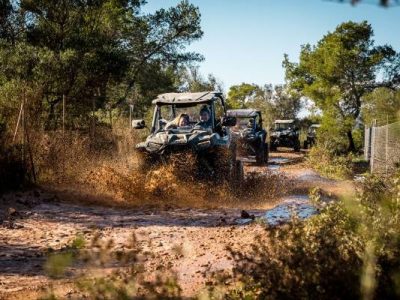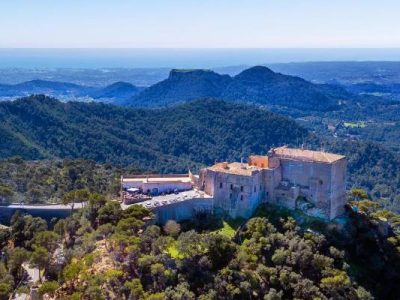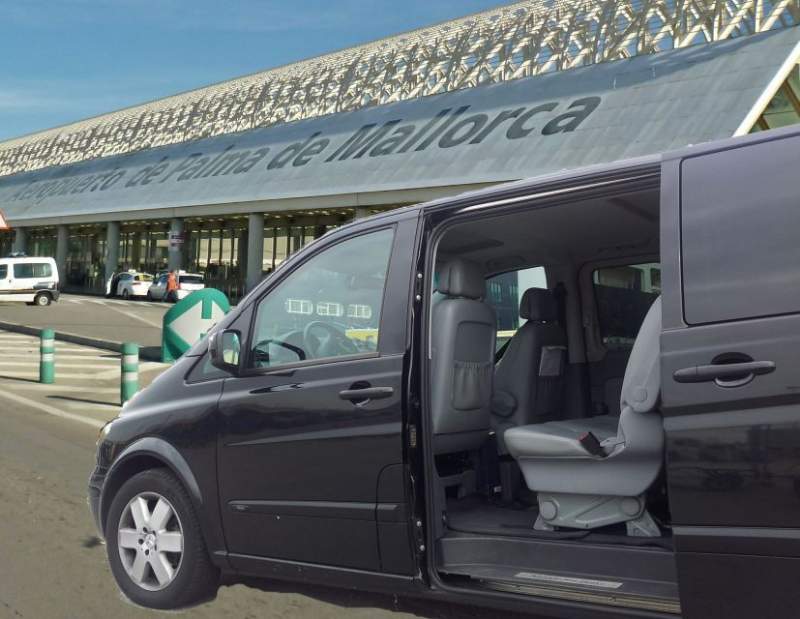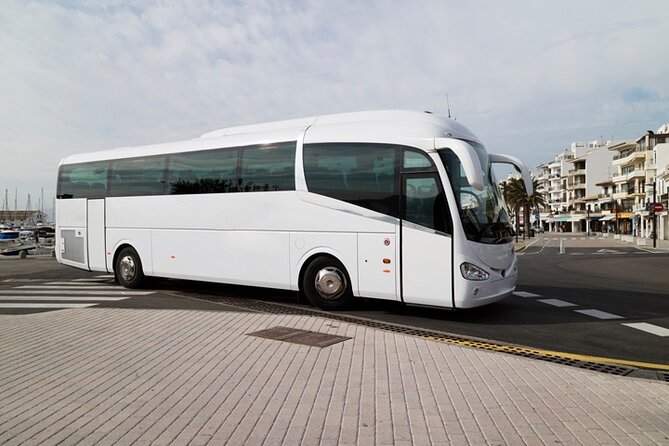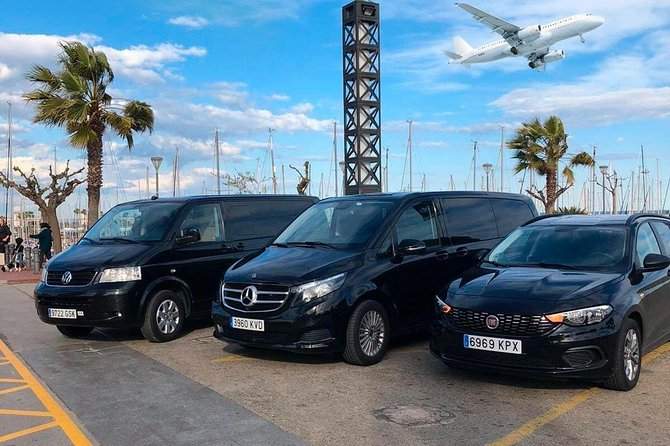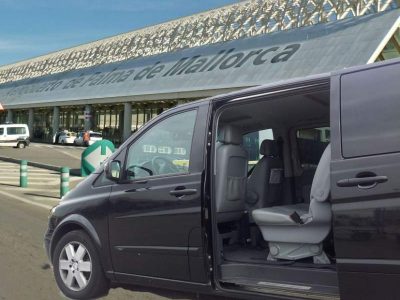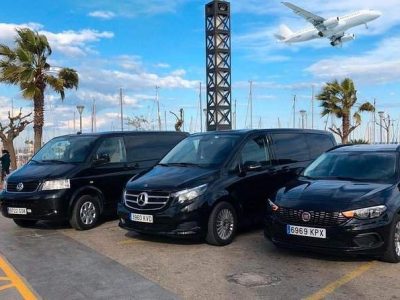All your holiday planning needs in one place, letting you book direct and benefit from official online rates
- Places To Go
- Things To Do
What’s Your Interest?
Traveling with kids
- Blog
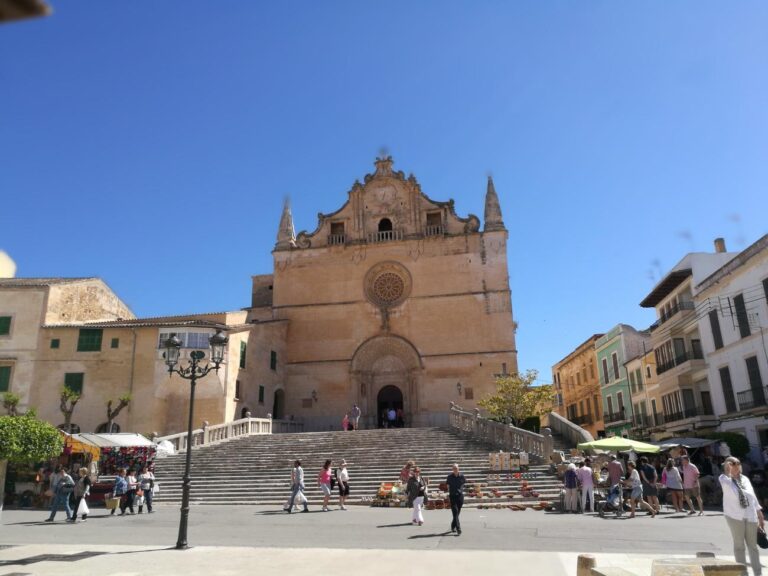
What to expect in Felanitx
As is the case with many other villages in the Mallorcan countryside, the theme of Felanitx is similarly rustic. The core of town life takes place around the large Plaça Espanya and Plaça de sa Font de Santa Margalida, where you will find a wealth of bars and eateries, as well as many of the town’s shops are located in this area.
The inhabitants of Felanitx are a proud people, they have a long history of brave patriots and wealth from wine production, therefore it does not seem so strange that they have acquired their own name. The men in Felanitx are thus known as ‘felanitxeris’ and the women as ‘felanitxeras’.
Things to do and see in Felanitx
SANTUARI DE SANT SALVADOR
Built as a refuge from the plague in 1348, the Sanctuary of Sant Salvador has become one of the most important destinations of pilgrims in Mallorca. It is situated on the summit of a mountain offering the most breathtaking panoramic views of the south-east coast. This is undoubtedly one of the top attractions in the area and in the Migjorn region.
CASTELL DE SANTUERI
Panoramic views of the entire south-eastern part of Mallorca and 4,000 years of history, is what you can look forward to when visiting the imposing fortress of Castell de Santueri outside Felanitx. This is the chance for you to explore a real medieval castle dating all the way from the 14th century, up close. You will be told all the stories of the battles, about the architecture and the usages of this amazing place that awaits your visit.
PARISH CHURCH OF SANT MIQUEL
Any fan of great imposing architecture is going to want to visit the massive parish church in the heart of Felanitx. It features a range of unique details including the main facade and entrance made in traditional Spanish Churrigueresque style.The church also carries a tragic event in its history, when the wall collapsed on Easter Sunday 1844 and buried 416 people under the bricks.
PARISH CHURCH OF SANT MIQUEL
Any fan of great imposing architecture is going to want to visit the massive parish church in the heart of Felanitx. It features a range of unique details including the main facade and entrance made in traditional Spanish Churrigueresque style.The church also carries a tragic event in its history, when the wall collapsed on Easter Sunday 1844 and buried 416 people under the bricks.
SPIN THE PEDALS ON THE MANY ROADS
Mallorca is a cycling paradise, and the area of Felanitx is perfect for doing exactly this sport. There are so many both broad and quiet roads in the municipality that makes it possible for both relaxing and challenging legs. One of the best rides goes to the summit of the Sant Salvador mountain just outside the village itself, in 514 meters height by sharp inclined hairpin turns, you really deserve a refreshment at the cafe at the top. Another popular ride takes you to the beautiful coves of the coast, such as Cala Murada, Portocolom and Portopetro.
AUGUSTINE CONVENT AND CHURCH
As one of the most influential monastic orders in the history Felanitx, it is no wonder how a convent and church can be built in this size.
OENOLOGICAL STATION
Post the terrible epidemic of phylloxera in the late 1800’s, the Spanish government initiated the creation of oenological stations in the most significant wine districts of Spain. The oenological station in Mallorca came to be placed here in Felanitx because it was the area with most vineyards of the island. The goal of the oenological station, was to research regional varieties thoroughly and then educate local winemakers of Mallorca to strengthen competitiveness on the international wine market.
ES SINDICAT
Es Sindicat was an initiative taken by local businessmen and investors to gather all local wine production in one place. This became the biggest business adventure the area had ever seen when it was inaugurated back in 1919, and gave rise to a new era of winemaking in Felanitx.
PLACA DE SA FONT DE SANTA MARGALIDA
The main square of Felanitx is dedicated to the patron saint of the town, Santa Margalida. There are three points of interest you have to see here; the legendary underground source, the Ca’n Prohens culture center and the statue of the Mallorcan slinger.
ADVENTURES ON FOOT
Walking is another very popular activity in Mallorca, and again is Felanitx the perfect choice. Follow the old pilgrimage road to the Sant Salvador sanctuary, or challenge yourself and hike to the medieval castle of Santueri, one of Spain’s 10 most unique castles. Again, there is no need to limit yourself in this area, visit the many stunning golden coves on the east coast, or find some some of the breathtaking viewpoints in the area. The diversity of the terrain makes Felanitx a splendid area for this activity.
CRUISE THE EAST COAST OF MALLORCA
A catamaran cruise from the nearby old fishing village of Portocolom is the perfect way to spend a half day in this area. Enjoy the crystal clear waters, the fresh breezes and the warm sun as you sail out on the Balearic Sea. The sea cruises will take you along the coasts so you can observe Mallorca from an entirely different view, a quite unique and very impressive experience. Beautiful little golden sandy coves, dramatic rocks and an amazing diverse wildlife is what you can look forward to.
FAQ
You will find the beach of Portocolom just 6 km from Felanitx town.
The weekly market in Felanitx is held Sunday morning.
Felanitx is known for the mountaintop sanctuary of Sant Salvador, the medieval rocky fortress of Castell de Santueri and rich traditions in wine production.
Events in Felanitx


Weekly market in Felanitx
The weekly market in Felanitx is held Sunday morning. This is one of the best opportunities to discover one of the richest traditions of Mallorca, as well as getting a good bargain on local products, crafts, clothes, jewelry etc.
Annual events and happenings
January
Sant Antoni
In the small hamlets of Es Carritxó, Son Prohens and Son Negre, one of the most popular and tradition-bound celebrations is held on January 17, the feast of Sant Antoni. Sant Antoni (Saint Anthony), is the protector of domestic animals and naturally has a special place in the culture and hearts of the rural areas of Mallorca. The celebration includes blessings and bonfires.
April
Quinquagesima
Sunday after Easter, the Quinquagesima is held in the small village of s’Horta with a fair full of family oriented activities. The program usually include exhibitions, paella contests, open-air dinners, children’s workshops, games, concerts and a great market. The Quinquagesima is coinciding with the festivities of Sant Isidre, patron saint of s’Horta.
May
May Fair
The Felanitx May Fair is one of the most popular annual events in the municipality. It happens on the second Sunday of May, and you can look forward to a town full of exhibitions of old vehicles, a craft market, a secondhand trade market, wine tastings, tapas routes and much more to indulge in.
Octopus Gastro-Fair in Portocolom
One of the newer traditions in the municipality, is the octopus gastro-fair in Portocolom which grows in popularity year by year. More than 40 restaurants and bars from the local area contributes with special menus, dishes and tapas, all made with octopus as the key ingredient. There are also a range of activities and events such as demonstrations, contests and concerts held at the marina.
July
Festes de Santa Margalida
On July 20th, it is time to celebrate the patron saint of Felanitx, Santa Margalida. This is a great time to discover some of the local traditions of the area such as the Cavallets, demons, and Capgrossos when they parade in the streets. The celebration has been held for more than 500 years and is deeply rooted in the identity of the felanixers.
Festes de Mare de Déu del Carme / Fira Marinera
July 16th is the day Portocolom pays homage to and celebrate the protector of seamen, Our Lady of Mount Carmel. The days leading up to the day are packed with a program of fun and cultural events in the old fishing village. Some of the highlights include a procession at sea, concerts at the marina and the annual Fira Marinera.
Fira Marinera coincides with celebration and has become one of the most popular events during the summertime in Portocolom. The fair is held at night and includes a market, open-air dinners, speeches, exhibitions and concerts. At the market, you can find all kinds of local products from crafts to food, all related to the maritime theme.
August
Festes de Sant Augustí
Sant Augustí (Saint Augustin) is the other patron saint of Felanitx and is celebrated during the second half of August. The program usually include a range of cultural events such as the night art fair, exhibitions, concerts and performances by the emblematic dance group of els Cavallers.
September
Festes de Sant Nicolau de Tolentí / Fira de Cas Concos
On September 10th, the patron saint of the hamlet of Can Concos, Saint Nicholas of Tolentino, is celebrated. The celebrations coincides with the annual street fair, that includes a big market, food stands and shows by the Xeremiers (traditional Mallorca bagpipers). One of the highlights to see during these festivities, is the parade of dancing cabezudos (giant heads) and demons.
Fira de Sant Miquel
The fair of Saint Michael is held on the Sunday before September 29, the day of the archangels (Sants Arcàngels). Some of the highlights of this fair include a flea market, a gastro-tour, competitions and various shows.
October
Fira del Pebre Bord
On the first Sunday following the feast of Saint Luke, on October 18, the traditional “matances” (butchers) fair is held in Felanitx. The name “Pebre Bord” refers to the spice (paprika) used for making the typical Mallorcan sausages, sobrassadas. Traditionally, this fair marked the beginning of the slaughter time for the butchers. The fair offers a range of gastronomical experiences such as special tapas and dishes served at selected bars and restaurants, folklore shows and a market in sync with the theme of the fair.
December
La Immaculada
On December 8th, in the hamlet of Son Mesquida, they celebrate the Immaculate Conception with a small and traditional fair. Some of the highlights include a community BBQ event, shepherds dog contest and a an open-air serving of paella.
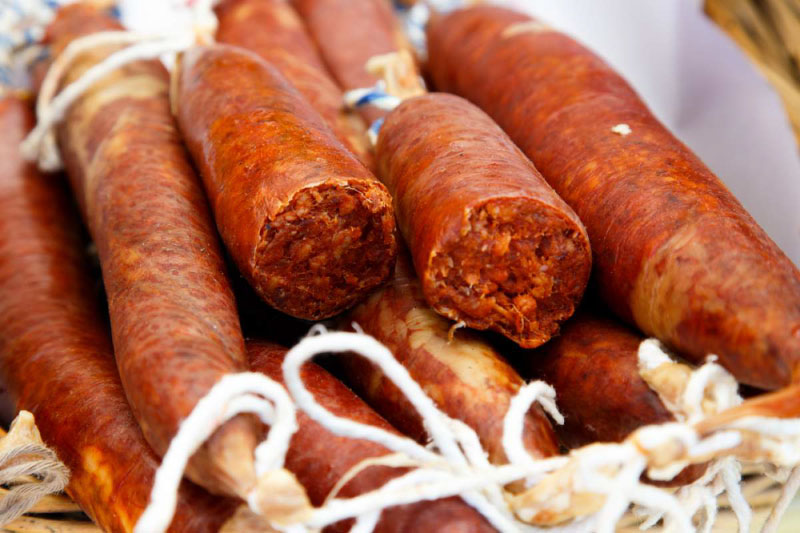
Support Local
Supporting local communities during your travels can have a profound impact. Stock up with groceries locally, stop in an artisan shop or enjoy a refreshment at a restaurant or bar. Now more than ever, these small businesses need support from travelers near and far.
Get to know Felanitx
Get to know the area of Felanitx and its history
Felanitx is a town and municipality located in the south-eastern region of Mallorca. Felanitx enjoys a privileged location of both rural, mountainous and maritime facilities, making it a great place for physical activities of all kinds. he municipality also includes the villages of Cas Concos des Cavaller and ‘Horta, the hamlets of Carritxó, Son Calderó, Son Mesquida des Camí, Son Negre, Son Proenç, Son Valls de Padrines and es Babot.
Typical local products of Felanitx
- Almonds
- Wine
- Apricots
- Fodder
- Clay
History of Felanitx
The Bronze Age
The occupation of the lands of current day municipality of Felanitx dates back to about 2,000 BC, to the Bronze Age. The most remarkable settlements from the Bronze Age, are the current fortification of Castell de Santueri, on top of the mountain of Puig de Santueri, and the caves at the summit of Puig de sa Mola. The first served as a place of worship and veneration for ancient tribes.
From around 1,800 BC, one of the most significant discoveries is the settlement Closos de Can Gaiá, found near the coastal area of Portocolom. The Closos de Can Gaiá very well exhibits the life of our ancestors from this time, where they lived, how they lived, where the community spaces were, and especially how they constructed. This site is a splendid example of the so-called “Naviforms” or “Navetas”, words which derive from the Spanish naves meaning “boats”, because their constructions reminds us of the shape of vessels. There are also a set of caves created for funerary purposes and tombs near the settlement, in which funerary gifts of bronze has been discovered during excavations.
The settlement close to the sea tells us about an early day agrarian people, who was also exploring and making use of the maritime resources available. It is difficult to say had actually been fishing for a living, as no tools for this purpose have been discovered. However, we know with almost certainty that these peoples were raising livestock and gathering fruits, due to the many tools found in the site.
Talayotic culture
Around 1,100 BC, the Talayotic culture arrives in the Balearic Islands. During the late Bronze Age, ancient Greeks and Phoenician peoples began to make their way to Menorca and Mallorca. Most likely, the ancient Greeks, or Phocaeans from Phocaea (current day Foça, Turkey), were looking to establish colonies in the western part of the Mediterranean due to the wealth of metals present. The Greeks established major colonies and even cities on the eastern side of the Iberian peninsula and in current day southern France and Italy. One of the best and most well-known cities established by the Phocaeans was Empúries, located in current day Girona. These facts allows us to think that Mallorca, especially the eastern part, and Menorca was colonized by Phocaeans mixing with the indigenous peoples.
Another mixing of indigenous peoples and foreigners, was trading Phoenicians who came from Carthage. In both cases, the new settlers brought with them new architectural styles, with the main philosophy of building from a defensive point of view. This gave rise to the circular shaped tower-like construction we classify as “talayots/talaiots”, which allowed the people to have a walled outpost or multiple outposts used for scouting and as community centers. One of the most remarkable examples found in Felanitx, is the walled enclosure of Poblat des Rossells.
One of the side products, if you will, of these mixes was the Foner Balear, a Balearic warrior known from the post-Talayotic period about 600 – 123 BC. The first documentation of the Balearic Foner dates from around 409 BC during the Second Sicilian War, during the conquest of Selinus. Later, in 310 BC, they appear in the chronicles of the Third Sicilian War. According to documentation, more than 2,000 Balearic foners participated in the battles on the Italian peninsula. Also, during the Punic Wars, Hannibal valued the foners highly, he considered them irreplaceable soldiers and were protected by all causes. But why? The Balearic foners excelled in distance and accuracy when it came to the skill of firing slingshots, hence they are popularly known as “slingers“. The projectiles of the slingers did not just crush skulls and bones, they sunk vessels, making it nearly impossible for the Romans to approach the coasts of Mallorca.
In the main square of Felanitx, Plaça de sa Font de Santa Margalida, a staute of a Balearic foner has been set up to honor this ancient warrior unique to Mallorca and Menorca.
The first Roman conquest
In 123 BC, after the fall of Carthage in the Third Punic War, Roman consul and general Quintus Caecilius Metellus conquered Mallorca and annexed it to the Roman empire. Following his triumph in conquering the archipelago, he was given the nickname “Balearicus”.
Metellus had done his research prior to initiating the campaign against the islands, he knew from experience that the projectiles of the Balearic slingers were deadly to his men. He therefore came up with a stroke of genius by strapping leather around his ships acting as a kind of shield or armor, allowing him to land on the shores of the island.
After fighting down the first resistance and defense forces of Mallorca, a protracted quest began to locate the many population centers, the Talayotic settlements such as dels Rossells, where the indigenous people had retrenched themselves. Eventually, the trained and well-organized Roman troops fought down any resistance left on the island.
Those Balearic foners who wasn’t killed by the Roman army, was included in it. In the war against Jugurta in Numidia, the Balearic foners was again mentioned as a key asset, this time as part of the Roman delegation. Caesar mentions them again context of the Gaul war, about 56 BC, fighting alongside other elite troops.
It is fairly difficult to say how much Roman activity there was in the area of Felanitx following the conquest. However, a Roman necropolis has been discovered and excavated in the historical center of the town meaning there has been some kind of activity in this area. But whether it was a funeral site for those killed during the battles with the indigenous people, or a regular burial site, is uncertain. Founds of artifacts tells us that the Castell de Santueri was an important Roman garrison, allowing them to scout the entire south-eastern area of Mallorca.
One of the theories of the etymological place name also derives from the Roman conquest. The theory basically suggest that the place name consisted of the three Latin words, foenum, ale and icius, which when put together gives “foenalicius”. Roughly translated to English, this means something like “Stroke of Hay”.
The Roman occupation lasted until the fall of the western Roman empire in the 4th century.
The Byzantine era
When the imperial power of Rome along with most of the western part of the Roman empire fell in 476, the same did not happen to the eastern part of the empire. From the capital of Constantinople (current Istanbul), Roman emperor, Justinian I, launched a range of military campaigns to recapture parts of the lost western Roman empire including the Balearic archipelago. General Belisari managed to take the kingdom of Africa (current Tunisia and parts of Libya and Algeria) in 533, while General Apolinar completed the recapture of the eastern Mallorca and Menorca in 534. Justinian made Mallorca a province of Mauritània Tingitana (current Morocco) with capital in Ceptem (current Ceuta). This period is referred to as the “Byzantine”, that also brought the introduction of Christianity to the Balearic Islands according to the law of Theodosius I.
The Islamic occupation
The next era that had influence on the area of current day Felanitx, was the Islamic period dominated by the Moors. In 902, Issam al-Khawlaní, a general under Emir Abd Allāh ibn Muhàmmad, annexed Mallorca and the Balearic Islands to the Emirate of Cordoba, ruled by the Umayyad dynasty. From this time, Mallorca saw a new and more organized societal structure, close to what we know today with administrative regions, fiscal collection etc. The capital of the island came to be known as “Madīna Mayūrqa”. This district also comprised the current day municipalities of Marratxí, Esporles, Banyalbufar, Puigpunyent, Estellencs, Andratx and Calvià.
The island was divided in a total of twelve or thirteen administrative zones, the so-called ajzà (singular: Juz), whereof this area came under the Juz d’ Manacur. This district comprised current day Felanitx, Manacor, Sant Llorenç, Santanyí, Ses Salines, Campos and Porreres.
The Moors lived in farmsteads and cottages scattered all over the area in tribal communities, however, in this particular area there was a larger constellation of houses, and, a mosque in the street of current day Carrer Sitjar. The area here became known as “Felhàni” or “Falhànis”, meaning “deep” or “inside”, respectively.
The agrarian lifestyle evolved significantly during the Moorish period, where agriculture and horticulture developed with hydraulic systems. The construction of water transportation systems, the so-called “qanats”, allowed the Moors to transport water from the major torrents and collect it in wells. This gave rise to a new and much more efficient agriculture which made it easier to cultivate the soil and and expand from typical livestock raising to also include crops and vegetables.
The Moors modified the Castell de Santueri, which had not been touched since the occupation of the Byzantine people. The Muslims built cisterns, wells, dungeons and storage rooms in the rocky walls of the fortification. Also, several paintings have been discovered during excavation works of vessels from this period. Also, the quadrangular defense towers are elements dating back to the Almoravid era, reconverted and reinforced later with new constructions and loopholes.
The Catalan-Aragonese conquest
In September 1229, King Jaume I of Aragón landed in the bay of Santa Ponca with a total of 150 ships carrying 700 horsemen and 20,000 ground infantry. By the end of the same year, Madīna Mayūrqa had been plundered, destroyed and bathed in the blood of Muslims. In less than three months, King Jaume had more or less already conquered Mallorca.
In the spring of 1230, the king and his almogavars initiated a second campaign in Mallorca, this time to capture the so-called “foreign areas” of the island, areas outside the administrative border of Madina Mayurqua, which included Felanitx. The Moorish population living here at that time, took refuge and retrenched themselves in Castell de Santueri, which at that time was not the castle preserved today, but a more primitive fortification. This was one of the last strongholds of Muslim resistance left on the island in the years of the conquest, and was not surrendered until 1231. Local legends tells about brave shepherds taking part in the battles of the Santueri castle, forcing Muslims to throw themselves off the cliffs with their heads inside clay pots.
One of the main figures in the conquest campaign, was Count Nunó Sanç, lord of Rosselló and Cerdanya. For years, he had traveled in these areas, making allies in Muslims tycoons giving him valuable information about strategic places of the resistance.It was him, whom had planned the landing in the bay of Santa Ponca, and generally one of the leading figures during the entire capture of the island.
As a reward for his major influence of the triumph, King Jaume granted him lands of 30,000 hectares in the areas of Felanitx, Santanyí, Valldemossa, Bunyola, Esporles, Banyalbufar; Manacor, Sant Llorenç, ses Salines, Campos and Porreres. In addition to these lands, he was also given parts of the Albufera in Alcúdia, as well as 338 houses in Ciutat de Mallorca (Palma) and 80 shops.
The new town
Following the death of King Jaume I in 1276, his successor, Jaume II, inherited the new kingdom of Mallorca. In order to bring new settlers to the rural areas of Mallorca, Jaume II promulgated a set of ordinances in the year 1300, that would grant every land of more than 100 neighbors the privilege of becoming a village. With this set of ordinances, new settlers could become landowners for an attractive amount of money, which they could rent out to smaller peasants who could then cultivate the soil and/or keep livestock, and sell their products at the local market.
Each settler had to purchase 3.55 ha of arable land, 7.10 ha of garrigue and a quarter of land (1,775 m2) in the new town, where he had to build a houses and move to live here within the next half year. For a possession like this, the settler would pay a tithe and a cash census (tax).
The ordenadors (the person in charge of effectuating the ordinances), were required to designate 355 ha of land and 710 ha of garrigue. The owners of these lands were then obliged to establish them to the new settlers, the so-called “acaptadors”, in exchange for a tax paid in metal determined by the ordenadors.
With the new ordinances also declared the premises of what should be included and the delimitation of the perimeter of the town and the affected areas. Previous design patterns of small villages and functional delimitation of the arable territory, as well as the extent of garrigues, determined the location of the town. This disposition of lands and population concentration was clearly based on a desire to achieve administrative efficiency and to be able to easily collect feudal rents for the monarchy.
In regards to the creation of the town, the width of the streets was set to measure 6.3 meters, the center of the town should be enforced by a protective wall or other fortified enclosure, and, the total perimeter of the town was expected to occupy no more than about 17.76 ha.
It was the ordenadors who was responsible for defining the space needed, to drawn the streets and make sure to provide necessary infrastructure such as water supply in the community spaces. Surrounding the fortified town center, several neighborhoods would by established.
Felanitx and Petra were two of the first villages to be established under the conditions of these ordinances.
In 1348, the plague stroke Mallorca and caused the death of nearly 900 inhabitants in Felanitx. King Pere III of Catalonia-Aragon granted the town permission to construct a chapel for the inhabitants to take refuge from the plague. It was commonly believed that being in a higher altitude was safer than being close to the ground.
From the beginning of the 15th century, the town border expanded north towards Manacor.
The crises of the 15th and 16 century
The main events that characterized the 15th and 16th century in Felanitx, and in the rest of Mallorca for that matter, were the societal crises between the nobility and the small landowners and artisans.
Revolta Forana (1450-1453)
The Revolta Forana (Revolt of the Foreigners) was the first conflict between the ruling nobility and the peasants. To clarify, the forana was all the rural areas outside the City of Mallorca (Palma), and the people who lived there were the forans (foreigners). The root of the conflict was that the foreigners demanded a stop of the increasing taxes, a fair distribution of the tax burden between the City of Mallorca and the rural areas, and, to put an end to the corruption between the nobility and the administrative body of the kingdom.
What really lit the conflict, was when the king ordered a so-called “capbreu” to be created, which would document every landowners rights of usage to the lands he owned. Landowners were obliged to present a notarial instrument to demonstrate their right over the lands they possessed. However, a great part of the peasants and small landowners did not have a such notarial instrument, or had somehow lost it.
The foreigners took action and tried in several ways to get the governor to come to the negotiation table. After several failed attempts done by violence, the governor initiated a great repression on the rural areas with hard conditions and cash penalties. The next attempt was led by Simó Tort Ballester, a man of Manacor, whom managed to besiege the City of Mallorca and get the forgiveness of the governor releasing the repression. The governor, however, was not satisfied with this solution and instead took more drastic measures in use. He sent his lieutenant, Jaume Cadell, to gather an army and confront the rebels, turning the entire situation into a civil war.
The conflict ended with the intervene of the king, whom sent Italian mercenaries to the island to end the conflict. The leaders were sentenced to death, and the participating towns of the rural areas were penalized with extra taxes to pay for all the damages caused by the rebels.
Les Germanies (1520-1523)
The second major conflict of this period, and perhaps the most extensive and bloody, was the rise of les Germanies (the Brotherhood). The conflict, in its most baic understanding, was rooted in the same as the prior; heavy fiscal pressure caused by public debt.
In 1520, the public debt absorbed most of the kingdom’s income. The tax burden became less and less bearable, especially for the more humble people of the island, both in the City of Mallorca and in the rural areas who bore a greater fiscal pressure per capita. As a direct consequence, the humble countrymen was forced to sell their lands to wealthy people who came to own more and more land.
Things soon escalated and the local Joanet Colom of Felanitx became one of the main agitators and leaders of the revolt against the crown. The Germanias was in fact starting their own government, so-called “twin societies”, adapted from the revolts in Valencia. Joanet Colom took great part in the imprisonment and execution of several barons and noblemen in the Bellver castle in Palma. In Felanitx, the Castell de Santueri became a refuge of those in opposition of the Germanias.
Eventually, after a bloody battle in the marshes of Sa Pobla in November 1522, the Germania was more of less defeated when the king’s troops arrived at the shores of Alcúdia. In spring 1523, Joanet Colom was hung, dragged and quartered, his body parts were nailed to the city walls and salt was sown in the fields of his properties so that they could never again be used for irrigation.
In 1524, a repression was initiated upon all participants and supporters of the rebellion army, and on the families of those who had been killed. Tax fines and confiscations of properties and personal belongings were some of the most common penalties. New mayors were appointed by the crown, in Felanitx, Onofre Ferrandell, whom was killed by some 100 rebellions who had remained hidden in the town and in Santanyí, Campos, Llucmajor and Porreres.
The war of la Germania, the plague of 1523, the repressions and immigration caused a reduction of a third of the Mallorcan population. The towns of Sencelles, Binissalem, Felanitx, Pollença, Alcúdia, Bunyola, Santanyí and Llucmajor lost more than half of their inhabitants.
The Revolt of les Germanias was the first real civil war in Mallorca, and the most bloody since the conquest back in 1229.
The great wine adventure
The 19th century is perhaps the most memorable in the history of Felanitx, at least in modern times. The wine industry in Mallorca was booming and Felanitx was the municipality with most vineyards. The population reached about 9,000 inhabitants in this century, and more than 2,000 houses were recorded.
One of they key factors in the increased demand for Mallorcan wines was the terrible phylloxera aphid outburst that had caused most of France’s, Italy’s and Spain’s vineyards to be destructed.
Eventually, in the late 19th century, the phylloxera reached the island that suffered the same fate; destruction of all grapevines and vineyards. The island was so blighted by the attack of phylloxera that it had to switch entirely to other sorts of crops like almonds.
In the beginning of the 20th century, Felanitx became home to the only Mallorcan oenological station, an initiative drafted by the Spanish government to re-establish the wine industry. The overall goal of the oenological station, was to research regional grape varieties and educate winemakers of Mallorca in what was concluded in the research. Winemakers were educated in grape varieties, health benefits, processing, cultivation etc. Moreover, they also acquired knowledge of business and trade in the national and international wine market to better differentiate themselves, thus strengthen the competitiveness of Mallorca.
About a decade after the inauguration of the oenological station, the director, Arnest Mestre in Artigas, came up with a brilliant idea to create a co-operative wine production called “es Sindicat”. Undoubtedly, this would become the biggest business adventure the town had ever seen. The idea in its most basic understanding, was to gather all small winemakers under one brand, so that the farmers would not carry the burden of distillation, processing, stocking, logistics etc., all the tasks related to the business part of wine-making were taken care of by es Sindicat. Up until the last part of the 21st century, the company was in business until bankruptcy ended the adventure irrevocably.
Other key events during the 19th century
In 1886, Queen Maria Cristina granted Felanitx the privilege of becoming an independent city. It was the third population of Mallorca to obtain this title after Palma and Alcúdia. This came after almost two centuries of centralism that was initially initiated by Felipe V in 1714 called the “Nova Planta”.
During this century, Felanitx also saw its own electricity factory erect and a bank. Institutions, such as the Theatrical Philharmonic Center (1882) and the Athenaeum of Agriculture, Industry and Commerce (1887), were created, and from 1893 onward, at intermittent times, the weekly “El Felanigense” (1897-) was published.
Towards the end of the 19th century, the traditional fishing port of Portocolom started to expand, as wealthy people seeked towards the ocean and the beaches to spend time during holidays and weekends.
The 20th century
In 1900, the construction of the new hospital began, and the plot of the old hospital from the 15th century became the current day market building.
In the 1930’s, Felanitx was dealing with numerous health issues of which some came directly from the fresh meat and fish sold outside the market and town. These health issues resulted in the creation of a market building to help keeping the fish fresh. Paradoxical, the first use of the building was the imprisonment of the republican politicians who had promoted the construction, when the Civil War broke out.
Another major health issue was poor sewage in the town, which was solved in the 1930’s with an extension of the sewage system of 4 km that could pass through most of the town, connect to an underground stream and eventually reach the sea.
Also the hospital expanded its services in the 1930’s to include free nursing mothers, as well as construction of new facilities for pregnant women. It was the republican right-wing administration under mayor Pere Oliver i Domeng, that prioritized health and education over most other issues.
When the Civil War began, Pere Oliver i Domeng fled on a boat to Menorca from Portocolom.
Some of the institutions created in this period includes La Protectora (1901), the Recreational Circle (1916), the Art and Culture Center (1942) and the Cosme Bauçà Foundation (1962).
Already from the beginning of this century the economical activities started to expand in the area, such as caper, apricot, sausage and meat preserves, production of artificial pearls and fishing. Around 1950-60 lignite deposits were exploited to make room for a flourishing construction industry.
Tourism boom
In the 1960’s, mass tourism was promoted in Mallorca. The areas of Portocolom, Cala Serena, Cala Marçal, Cala sa Nau, Cala Mitjana and Cala Ferrera started to become crowded by holidaymakers during summer. This changed the local economy significantly, as construction and service industries was suddenly in demand.
Today, Felanitx, like most other coastal municipalities, is still highly depending on tourism which is the biggest sector.
Practical Info
Useful Numbers
Emergency: 112
National police: 091
Local police: 092
Guarda civil: 062
Fire: 080
Maritime emergencies: 900 202 202
Tourist Office: +34 971 58 00 51
Public Transport
Bus lines: 501, 512, 514
Power Supply
220V
